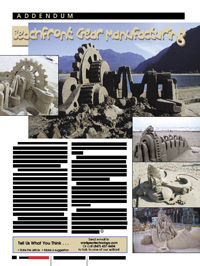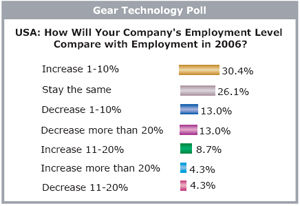Letters to the Editor
Name That Beachfront
 While reading through the January/February 2007 issue of Gear Technology, a question arose around the location of a picture that appears on page 80. The picture in question is at the top of the page and has the caption “Beachfront Gear Manufacturing” running through it. One believes the location to be Harrison Hot Springs in British Columbia. It looks very close, but I am not sure. Could you shed some light on this for us?
While reading through the January/February 2007 issue of Gear Technology, a question arose around the location of a picture that appears on page 80. The picture in question is at the top of the page and has the caption “Beachfront Gear Manufacturing” running through it. One believes the location to be Harrison Hot Springs in British Columbia. It looks very close, but I am not sure. Could you shed some light on this for us?
Thanks for looking into this for us.
Regards,
Gordon Kisser, purchasing
Vancouver Gear Works Ltd.
Editors’ Reply: Good call! The picture is indeed from Harrison Hot Springs, B.C. For additional information on the gear sand sculptures, visit the artist’s website at www.sandguy.com.
Overseas Outsourcing Hurts Our Industry
(Editor’s Note: The following letter was in response to our online Voices question, “Is OEM Outsourcing Good or Bad for the Gear Industry?”)
OEM outsourcing [outside the United States] is in no way any good for any industry, let alone the gear industry. Gear manufacturing is one of the most difficult types of machining, and it takes training to do it right.






